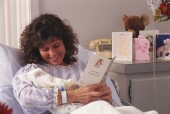
WEDNESDAY, May 18 (HealthDay News) — Richer women are more likely to choose to deliver their babies by cesarean section than poorer women, a switch from the past when the reverse was the case, a new Scottish study has found.
Cesarean sections are often recommended when women face difficult deliveries or complications because of diabetes or preeclampsia, a life-threatening increase in blood pressure. But the surgery is associated with higher risks and extra costs.
In the United States, cesarean deliveries reached a record high in 2008, accounting for almost one-third of births, previous research revealed.
The authors of the new study looked at births in Scotland during three time periods: 1980-1981, 1990-1991 and 1999-2000. Their findings are published in the May 18 online edition of the journal BMC Public Health.
“Thirty years ago, mothers having cesarean sections were more likely to come from deprived areas and/or from a lower social background. This was true for both elective and emergency sections,” study co-author Ruth Dundas, a researcher with the Medical Research Council/Chief Scientist Office, Social and Public Health Sciences Unit, said in a news release from the journal’s publisher.
“Ten years later, the rates had changed so that, although women from a lower social background were more likely to have emergency sections, there was no difference between them and women from a higher social background in elective surgery rates,” Dundas added. “By 1999-2000, the rates had equalized for emergency section, but babies born by elective surgery were more likely to belong to mothers from the higher of the social classes measured.”
The trend toward greater equality between social classes when it comes to emergency cesareans “reflects increased equality in health care,” Dundas pointed out. But, she noted, that doesn’t explain the differences in regard to elective surgeries.
Commenting on the study findings, Dr. Andrei Rebarber, clinical associate professor at New York University School of Medicine, said that education level — which is linked to income — is playing a major role in the choices of women to deliver by C-section in the United States.
“The lay press has attributed elective cesarean sections to a combination of medical, legal and patient choice issues,” Rebarber said. “However, it seems likely that patient preference has become an ever-increasing factor in the overall cesarean delivery rate.”
Rebarber suggested that there needs to be better education of doctors and patients about the risks and benefits of different approaches to childbirth.
More information
For more about cesarean births, visit the U.S. National Library of Medicine.

